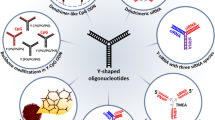Abstract
Ultrasound (US)-mediated microbubble destruction is recognized to have considerable potential for gene delivery, whereas, there is few report of its effect on enhancing liposomal transfection. In this study, we used pIRES2-EGFP/hES containing human endostatin (hES) cDNA as target gene to test the hypothesis that US exposure with microbubbles could improve liposomal transfection, and to investigate the possibility of intracellular delivery of ES gene using this method. Under the controlled US exposure condition with microbubbles, the plasmid:liposome was transferred into COS-7 cells. The transfection rate, the expression of endostatin and the inhibition effect of transfection-endostatin on endothelial cells were assessed. The results revealed that US-mediated microbubble destruction together with liposome could significantly enhance gene transfection without obvious cell damage. By this means, endostatin gene could be efficiently transferred into COS-7 cells and expressed. The transfection-endostatin could inhibit endothelial proliferation and migration, which suggests that the non-viral method might be useful in anti-angiogenesis therapy in the future.






Similar content being viewed by others
References
Sauter BV, Martinet O, Zhang WJ et al (2000) Adenovirus-mediated gene transfer of endostatin in vivo results in high level of transgene expression and inhibition of tumor growth and metastases. Proc Natl Acad Sci USA 97:4802–4807. doi:10.1073/pnas.090065597
Boehm T, Folkman J, Browder T et al (1997) Antiangiogenic therapy of cancer does not induce acquired drug resistance. Nature 390:404–407. doi:10.1038/37126
Moulton KS, Heller E, Konerding MA et al (1999) Angiogenesis inhibitors endostatin or TNP-470 reduce intimal neovascularization and plaque growth in apolipoprotein E-deficient mice. Circulation 99:1726–1732
O’Reilly MS, Boehm T, Shing Y et al (1997) Endostatin: an endogenous inhibitor of angiogenesis and tumor growth. Cell 88:277–285. doi:10.1016/S0092-8674(00)81848-6
Dhanabal M, Ramchandran R, Waterman MJ et al (1999) Endostatin induces endothelial cell apoptosis. J Biol Chem 274:11721–11726. doi:10.1074/jbc.274.17.11721
Wilson DR (2002) Viral-mediated gene transfer for cancer treatment. Curr Pharm Biotechnol 3:151–164. doi:10.2174/1389201023378445
Unger EC, Matsunaga TO, McCreery T et al (2002) Therapeutic applications of microbubbles. Eur J Radiol 42:160–168. doi:10.1016/S0720-048X(01)00455-7
Tachibana K, Uchida T, Ogawa K et al (1999) Induction of cell-membrane porosity by ultrasound. Lancet 353:1409. doi:10.1016/S0140-6736(99)01244-1
Ward M, Wu J, Chiu JF (2000) Experimental study of the effects of Optison concentration on sonoporation in vitro. Ultrasound Med Biol 26:1169–1175. doi:10.1016/S0301-5629(00)00260-X
Bao S, Thrall BD, Miller DL (1997) Transfection of a reporter plasmid into cultured cells by sonoporation in vitro. Ultrasound Med Biol 23:953–959. doi:10.1016/S0301-5629(97)00025-2
Huber PE, Jenne J, Debus J et al (1999) A comparison of shock wave and sinusoidal-focused ultrasound-induced localized transfection of HeLa cells. Ultrasound Med Biol 25:1451–1457. doi:10.1016/S0301-5629(99)00099-X
Mukherjee D, Wong J, Griffin B et al (2000) Ten-fold augmentation of endothelial uptake of vascular endothelial growth factor with ultrasound after systemic administration. J Am Coll Cardiol 35:1678–1686. doi:10.1016/S0735-1097(00)00575-1
Taniyama Y, Tachibana K, Hiraoka K et al (2002) Local delivery of plasmid DNA into rat carotid artery using ultrasound. Circulation 105:1233–1239. doi:10.1161/hc1002.105228
Schratzberger P, Krainin JG, Schratzberger G et al (2002) Transcutaneous ultrasound augments naked DNA transfection of skeletal muscle. Mol Ther 6:576–583. doi:10.1016/S1525-0016(02)90715-X
Lawrie A, Brisken AF, Francis SE et al (1999) Ultrasound enhances reporter gene expression after transfection of vascular cells in vitro. Circulation 99:2617–2620
Unger EC, McCreery TP, Sweitzer RH (1997) Ultrasound enhances gene expression of liposomal transfection. Invest Radiol 32:723–727. doi:10.1097/00004424-199712000-00001
Bekeredjian R, Chen S, Grayburn PA et al (2005) Augmentation of cardiac protein delivery using ultrasound targeted microbubble destruction. Ultrasound Med Biol 31:687–691. doi:10.1016/j.ultrasmedbio.2004.08.002
Kinoshita M, Hynynen K (2005) A novel method for the intracellular delivery of siRNA using microbubble-enhanced focused ultrasound. Biochem Biophys Res Commun 335:393–399. doi:10.1016/j.bbrc.2005.07.101
Taniyama Y, Tachibana K, Hiraoka K et al (2002) Development of safe and efficient novel nonviral gene transfer using ultrasound: enhancement of transfection efficiency of naked plasmid DNA in skeletal muscle. Gene Ther 9:372–380. doi:10.1038/sj.gt.3301678
Meijering BD, Henning RH, Van Gilst WH et al (2007) Optimization of ultrasound and microbubbles targeted gene delivery to cultured primary endothelial cells. J Drug Target 15:664–671. doi:10.1080/10611860701605088
Kinoshita M, Hynynen K (2005) Intracellular delivery of Bak BH3 peptide by microbubble-enhanced ultrasound. Pharm Res 22:716–720. doi:10.1007/s11095-005-2586-7
Kinoshita M, Hynynen K (2005) A novel method for the intracellular delivery of siRNA using microbubble-enhanced focused ultrasound. Biochem Biophys Res Commun 335:393–399. doi:10.1016/j.bbrc.2005.07.101
Howard CM, Forsberg F, Liu JB et al (2007) Using a commercial ultrasound contrast agent for viral-mediated gene transfer in vitro and in vivo. AIP Conf Proc 911:526–532. doi:10.1063/1.2744325
Deshpande MC, Prausnitz MR (2007) Synergistic effect of ultrasound and PEI on DNA transfection in vitro. J Control Release 118:126–135. doi:10.1016/j.jconrel.2006.12.010
Pislaru SV, Pislaru C, Kinnick RR et al (2003) Optimization of ultrasound-mediated gene transfer: comparison of contrast agents and ultrasound modalities. Eur Heart J 24:1690–1698. doi:10.1016/S0195-668X(03)00469-X
Ward M, Wu J, Chiu JF (1999) Ultrasound-induced cell lysis and sonoporation enhanced by contrast agents. J Acoust Soc Am 105:2951–2957. doi:10.1121/1.426908
Wu Y, Li ZY, Zhao X et al (2006) Inhibition of ovarian tumor growth by gene therapy with recombinant soluble vascular endothelial growth factor receptor 2. Hum Gene Ther 17:941–948. doi:10.1089/hum.2006.17.941
Acknowledgments
We especially thank Dr. Hongyan Ge, Lichun Pei, Hongsheng Liang, Shujun Zhang and Hua Chen for providing the excellent technical assistance throughout the experiment. This study was supported by a Grant for Key Program (No.GC06C413) from the Heilongjiang Provincial Science and Technology Committee, China.
Author information
Authors and Affiliations
Corresponding author
Additional information
C. Zhang and X. Zhang contributed equally to this paper.
Rights and permissions
About this article
Cite this article
Zhang, C., Zhang, X., Liu, C. et al. Expression of endostatin mediated by a novel non-viral delivery system inhibits human umbilical vein endothelial cells in vitro. Mol Biol Rep 37, 1755–1762 (2010). https://doi.org/10.1007/s11033-009-9600-9
Received:
Accepted:
Published:
Issue Date:
DOI: https://doi.org/10.1007/s11033-009-9600-9




